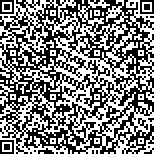| This article has been:Browse 1319Times Download 3427Times |

scan it! |
|
|
| DOI:10.13522/j.cnki.ggps.2022395 |
|
| Approach for Evaluating Summer Maize Yield Losses under Extreme Rainfall Events: A Case Study in “7·20” Heavy Rain Event in Henan Province |
|
LIU Haijun, TANG Xiaopei, YANG Li
|
|
Beijing Key Laboratory of Urban Hydrological Cycle and Sponge City Technology,
College of Water Sciences, Beijing Normal University, Beijing 100875, China
|
| Abstract: |
| 【Objective】Flooding and waterlogging is a common abiotic stress facing agricultural production. Understanding its impact on crop yield is essential to evaluating food supply and security. The objective of this paper is to present a rapid and accurate method for assessing the impact of extreme rainfall events on crops. The method was then applied to evaluate effect of the flooding on 20 July (20/7), 2021 on yield of summer maize in Henan province.【Method】We used daily normalized vegetation index (NDVI) acquired from remote sensing imageries and DEM data from 18 June to 29 July 29 to estimate the flooded summer maize areas across the province after the 20/7 flooding, using pixel statistic method. The yield loss was estimated based on the relationship between flooding duration and maize yield reduction, as well as the compensatory effect of the topdressing afterwards.【Result】The flooded areas were mainly located in the north, including Anyang, Xinxiang, and Zhengzhou, affecting 39.09 million ‘mu’ of summer maize, in which 8.51 million ‘mu’ was moderately flooded (continuously flooding 3 days), 1.95 million ‘mu’ was severely flooded (continuously flooding 5 days), and 2.96 million ‘mu’ lost harvest (continuously flooding 7 days). This flooding resulted in a direct loss of 3.93~4.91 million tons of summer maize, accounting for 17%~22% of maize production in the province (based on maize production in 2019). This is consistent with field survey results. The proposed method is thus accurate and reliable, quickly determining flooded cropped areas and estimating their yield losses.【Conclusion】A method based on remote sensing imageries is developed to evaluate flooding severity, its associated areas and crop yield losses. Comparing with ground-truth data obtained in the 20/7 flooding shows that the method is accurate and reliable. |
| Key words: heavy rain; summer maize; flooding area; yield loss assessment; food security |
|
|